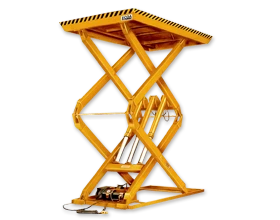5 Common Vertical Scissor Lift Maintenance Mistakes and How to Avoid Them
Vertical scissor lifts play a crucial role in various industries, providing efficient and safe access to elevated work areas. To ensure the longevity and optimal performance of these lifts, regular maintenance is essential. However, many operators and maintenance personnel make common mistakes that can lead to costly repairs and downtime. In this article, we will discuss five of these common vertical scissor lift maintenance mistakes and provide insights on how to avoid them.
1. Neglecting Regular Inspections
One of the most common maintenance mistakes is neglecting regular inspections. Over time, wear and tear can occur, and components may become loose or damaged. Without routine inspections, these issues may go unnoticed, leading to more significant problems down the line. To avoid this mistake, implement a regular inspection schedule that includes checking for hydraulic fluid leaks, loose bolts, and any signs of wear on the lift components.
2. Inadequate Lubrication
Proper lubrication is crucial for the smooth operation of a vertical scissor lift. Unfortunately, some operators either overlook this aspect of maintenance or use the wrong lubricants. Inadequate lubrication can result in increased friction, leading to premature wear and potential breakdowns. To avoid this mistake, follow the manufacturer’s guidelines for lubrication intervals and use the recommended lubricants for each specific component.
3. Ignoring Warning Signs
Vertical scissor lifts are equipped with various safety features and warning systems. Unfortunately, some operators ignore warning signs, assuming that the lift will continue to function properly. Whether it’s an unusual noise, a warning light, or a change in performance, these signs should never be ignored. Regularly train operators to recognize and respond to warning signals promptly, and ensure that any reported issues are addressed immediately to prevent further damage.
4. Incorrect Battery Maintenance
Many vertical scissor lifts are powered by batteries, and neglecting proper battery maintenance is a common mistake. Failure to follow the recommended charging and maintenance procedures can result in reduced battery life and decreased overall performance. To avoid this mistake, adhere to the manufacturer’s guidelines for battery maintenance, including proper charging intervals, water level checks, and cleaning procedures.
5. Improper Storage Practices
When vertical scissor lifts are not in use, improper storage practices can lead to corrosion and other issues. Storing the lift in environments with extreme temperatures, exposure to corrosive substances, or without proper protection can accelerate wear and deterioration. To avoid this mistake, store the lift in a dry, sheltered area, preferably indoors, and follow the manufacturer’s recommendations for long-term storage.
Conclusion
Vertical scissor lifts are valuable assets in various industries, and proper maintenance is crucial for their reliability and longevity. By avoiding these common maintenance mistakes – neglecting inspections, inadequate lubrication, ignoring warning signs, incorrect battery maintenance, and improper storage practices – operators and maintenance personnel can ensure that their vertical scissor lifts operate at peak performance, minimizing downtime and extending the equipment’s lifespan. Regular training, adherence to manufacturer guidelines, and a proactive approach to maintenance are key elements in avoiding these common pitfalls and maximizing the efficiency of vertical scissor lifts.
